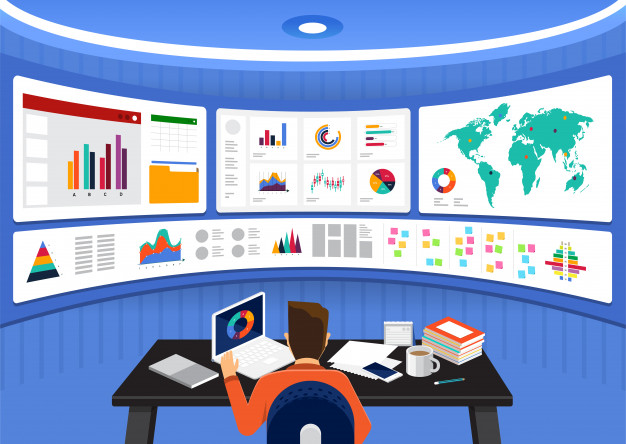What Is Data Visualization and How Is It Used in Marketing?
3 Mins Read
Published on: 28 November 2020
Last Updated on: 09 September 2024

toc impalement
Have you ever found yourself staring blankly at a spread of important statistics you didn’t even know how to start wrapping your brain around?
Data visualization is just easier — astoundingly so! Not only is 90% of the information our brains process visual information, but it can do image processing in 13 milliseconds, according to MIT.
That means our processing time for images can be as high as 600 times faster than that of text processing.
Some people even say we’re wired to respond to visual marketing. Why is that?
Let’s find out together!
Is It Data-Driven or Conceptual?
Data visualization broadly falls into two categories of conceptual and data-driven information. It’s the most important first step before making any flowchart, graph, or visual guide: identifying the purpose and need of your visualization.
Conceptual information focuses on ideas and simplifying or distilling information to its basic level.
Data-driven information focuses on statistical analysis and cold hard facts. It’s there to open your eyes to truth and enlightenment through indisputable rationalization.
Either category can use the same visual tropes, such as line or bar charts, regardless of whether there are data points or only theoretical concepts.
Four Paradigms of Dataviz
You can imagine declaration and exploration on the y-axis and conceptual and data-driven delivery on the x-axis. These make four quadrants of dataviz that you can use to determine how best to deliver your information.
As a marketer, it’s up to you to know where your client lies on this plot. Then, knowing what kind of chart or graph to use and what will go into it could come easier to you.
Let’s say you had an idea about marketing something like click fraud prevention to business owners and needed to explain it visually. Would it be conceptual, or data-driven? Would you be exploring or declaring?
Marketing to the masses mostly falls into declaring facts or concepts with only one or two dimensions of data. You can inundate them with knowledge in a blinding light of facts or you can give them the gist. You can’t do both.
Likewise, if you’re a consultant and you’re brainstorming, you probably don’t have all the facts in front of you. Regardless, you need to illustrate marketing concepts to your client on a napkin at a lunch meeting. That would be conceptual exploration.
If you do have numbers and you’re trying to discover the answer to a hypothesis, trying to wrap your brain around the answer, this is likely the way you want to go.
Decided: Data Visualization For the Win
What would you say about data visualization now, after reading this article? Why do marketers rely so heavily on dataviz?
At Smart Business Daily we try to inform our readers to make the best decisions possible (and not fall prey to gut instinct alone). Because data and facts are so important, why not check out more of our articles and stay ahead of the pack?
Keep browsing!
Read Also:


















Comments Are Closed For This Article